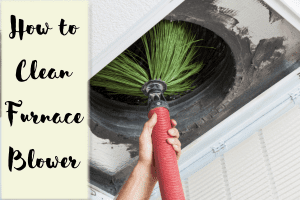Comfort Aire Inc offer the best service to clean furnace blower efficiently. For more information, you can call (773) 406-7223.
Dirt is your furnace’s worst enemy. It has the potential to waste fuel and significantly reduce efficiency. Because dirt affects all three essential components of your furnace, cleaning is the most critical aspect of routine maintenance. The filter system, the blower, and the motor should all be cleaned.

How Often To Clean Furnace Blower
During periods of continuous operation, replace or clean the furnace filter at the beginning of the heating season and approximately once a month afterward. Remove the filter and bring it up to the light to inspect it. If it appears to be clogged, replace it immediately with a new filter of the same type and size, regardless of how long it has been in use.
Clean the blower assembly, belts, and pulleys that connect to the blower and the motor housing. Cleaning the blower is crucial if your furnace is equipped with a squirrel-cage fan, as the holes of this type of blower frequently become blocked with debris. To clean the blower, remove the panel covering the filter to obtain access to the blower or the front panel of the furnace. The panel can be kept in place with hooks or a series of retaining screws. Typically, access to the inside of the blower is acquired by sliding out the fan unit, which is secured in place by screws.
If the power cord to the fan assembly is not long enough to allow the fan unit to retract, unplug it fully. Make a note of the wire connections first to rebuild the unit appropriately. Clean each fan blade and the areas between the edges with a toothbrush. Then, using a vacuum cleaner hose, suction up all dirt and debris loosened by brushing. Belts and pulleys for vacuum systems. Clean the motor housing to avoid excessive heat accumulation in the motor.
Lubrication is required for sealed blower motors, but if yours has oil ports, continue to the next page to discover how to service them.
Repairing Gas Furnaces and Heaters: Due to low operating costs and low maintenance requirements, gas furnaces have gained popularity. Maintain a trouble-free gas furnace.
Repairing Large Appliances: If your furnace isn’t the only malfunctioning machine in your home, this article will teach you how to fix other appliances.
Repairing Small Appliances: A toaster or blender appears to be child’s play after overcoming the furnace. Learn how to fix them here.
Maintaining the Thermostat: To ensure that there is indeed an issue with your heating system, you may want to check the thermostat as well. Discover how to calibrate a thermostat properly.
How to Clean Ac blower wheel without removing
An air conditioner utilizes fans to move clean, warm air from one location to another and replace it with cold air. Additionally, it maximizes airflow for improved circulation and device features. However, contrary to widespread assumption, an AC blower comes in various shapes and sizes, depending on the type of AC unit. The four most often used centrifugal fan types are the propeller fan, axial tube fan, and axial vane fan. But as you know, sometimes we need professional help to get work done. So you can contact furnace companies near me.
Centrifugal Blower
A centrifugal fan is a type of air conditioning fan that is more compact and powerful than other air conditioning fans. It resembles a hamster wheel or a water wheel and operates under severe pressure.
Fan with a propeller
The propeller is one of the most frequent types of air conditioner blower that you may be familiar with. This kind consists of a disk-shaped wheel that is commonly mounted on a circular plate and is driven by a belt, and due to its widespread use among conventional spilled units, it is frequently used in work areas of varied sizes.
Axial tube fan
Another often used form of air conditioning blower is the axial tube fan. This kind comes in various sizes with an exterior and structural design similar to a standard car tire – from small to bulky and oversized.
Axial fan with a vane
This fan is constructed in the same manner as a standard fan wheel. It is often in a disc contained within a completely secure cylinder tube.
For your air conditioner blower and other air conditioning components to work correctly, the air conditioner blower requires meticulous care and cleaning. Routine cleaning of the air conditioner system and its ingredients is included in the air conditioner care maintenance. Here are some short measures to take to clean aircon blowers and fans thoroughly —
Step one- To begin cleaning, flip open the air conditioning unit’s cover to access the cleanable filters. It is recommended to wash with soap and water and a smooth cleaning pad.
Step two – dismantle the air con’s air vanes and flap to access the impeller.
Step three – Using a half-inch paintbrush, clean the impeller to remove accumulated dirt or dust. Ensure that you do this correctly until no dust or filth remains.
Step four: Using the somewhat wet rag, wipe away any remaining debris and grime. Using another piece, wipe away the whole surface of the impeller until it is immaculate.
Step Five – put on the air conditioner, wait for other debris to accumulate, and then clean with a handy sweeper or vacuum cleaner.
How to Clean a Blower Motor In a Car
Secure your vehicle’s doors and windows. Ascertain that the car is turned off and the keys are removed from the ignition. Spray liberally with the enzymatic cleaner into all of your car’s interior vents. Consult your vehicle’s owner’s manual to ensure you’ve located all of the air conditioning vents. After reading this will sort out your problems about how to clean the furnace blower.
Method 1: Eliminating Air Conditioning Odors
- Purchase a disinfectant aerosol spray effective against mold and mildew, such as a specialist duct cleaner.
- Alternatively, you can create your natural spray by combining vinegar and water.
- Turn off the automobile, the fan, and the air conditioning altogether.
- Spray disinfectant into every vent.
Additionally, how can you determine if your air conditioner’s blower motor is defective? The Signs of a Malfunctioning or Failing Heater Blower Motor Vents have insufficient airflow. One of the first signs of a possible heater blower motor problem is a lack of airflow from the vents.
The fan operates at a limited number of speeds. Another sign of a faulty or failed heater blower motor is working at a fixed speed range. There is no air coming from the vents. Simply put, why is my car’s air conditioning fan so loud?
The buzzing is created by liquid refrigerant entering the compressor intake port and is an excellent indication of an excessive amount of Freon. A failing air conditioner compressor, a compressor pulley or serpentine belt, or a compressor clutch can all generate a rattling noise.
